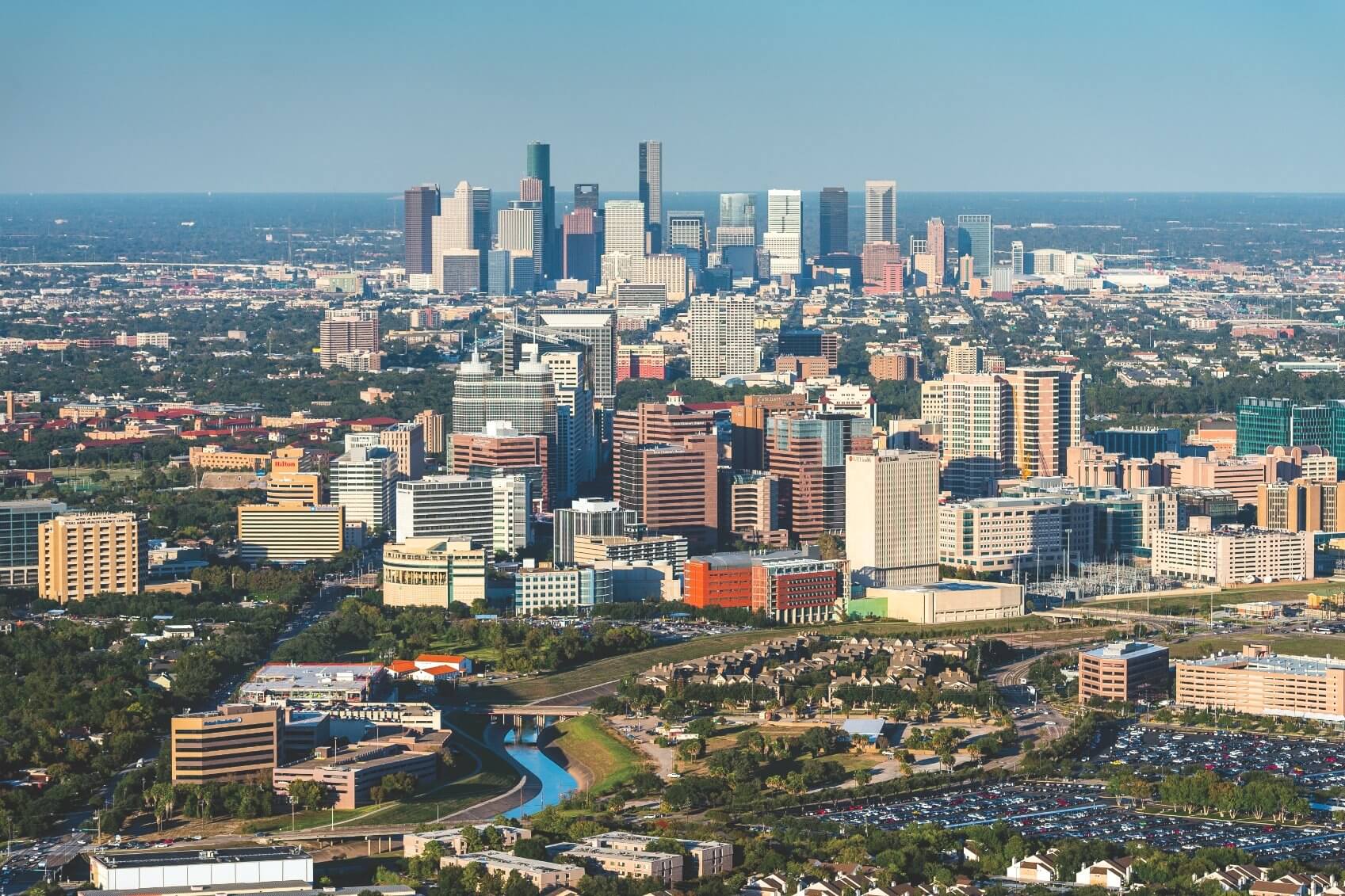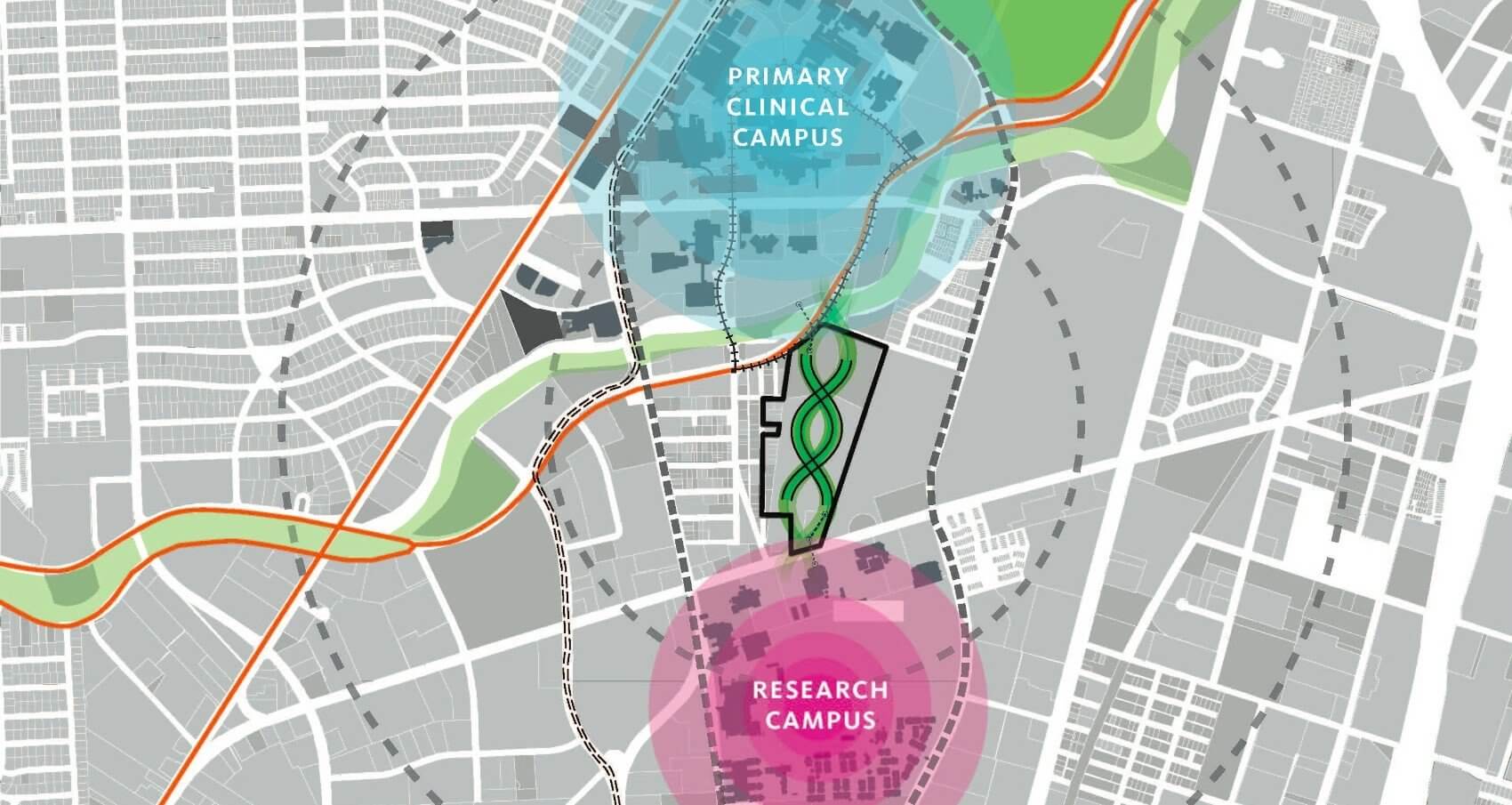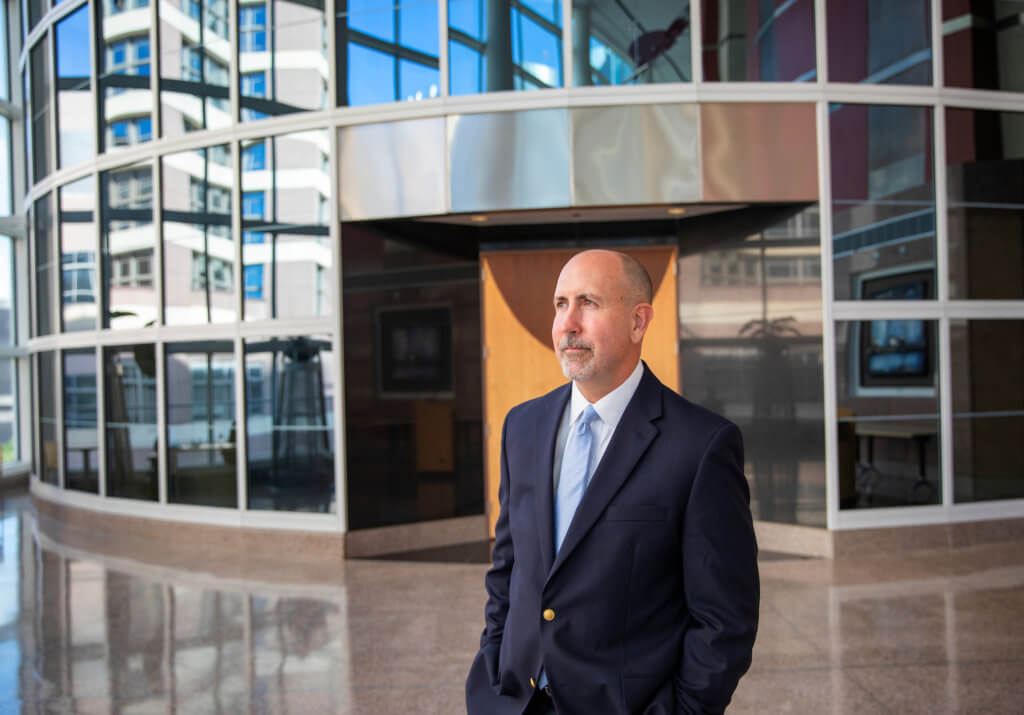A Year In Review

What an exciting year it has been! As I look back on 2014, we really have so much to be proud of. It was an amazing year, marked by noteworthy achievements and promising collaborative endeavors. To sum it all up in just a few pages is difficult. The Texas Medical Center continues to grow and change, in no small part due to the coming together of visionary leaders—like those we are fortunate to have in the medical center—and the belief that our medical center has what it takes to stand alongside some of the world’s best. Our community continues—as it always has—to deliver exceptional patient care, but more than that, researchers are making long-term investments in human health. The fruits of their labor will transform the landscape of health care.
You really don’t need to look very far on this campus to find someone with bold, audacious ideas. We want to harness that passion and drive, and elevate it—ingrain it in the TMC culture, collectively working towards solutions.
And any one of our member institutions is already doing that, and then some. Look at MD Anderson, for example. Their Moon Shots program has committed to ‘make cancer history.’ They have bold, game-changing goals, and there is no question that they have what it takes to see that through. Can you imagine a world without cancer? They do, every day in their labs.
Look at the work being done by Baylor in Genomics. They recently announced their deal with Miraca Holdings, enhancing Baylor’s position as a leader in DNA testing and genome sequencing. The Harris County Institute of Forensic Sciences recently broke ground on a new state-of-the-art medical examiner and forensic science building. Texas Children’s Hospital is expanding to The Woodlands and adding 19 additional stories to the tower next to Texas Children’s Pavilion for Women. Memorial Hermann is planning an exciting expansion to their campus, adding over a million square feet. Houston Methodist is also expanding, adding a new facility in The Woodlands, and another in Houston, which will be a fantastic addition to the Methodist campus.
The Michael E. DeBakey High School is moving from our Leland Anderson campus to be embedded right in the middle of the Texas Medical Center. This is an exciting new development as they expand their ability to educate young people interested in the life sciences. It’s a tremendous opportunity, and unparalleled anywhere in the world, that I know of, to have a high school embedded in the largest medical center in the world. Houston Community College Coleman College is doubling the size of their campus.
I also want to offer congratulations to Dr. Bob Ivany and the University of St. Thomas, officially named the 55th member of the Texas Medical Center. In this tremendous time of growth and opportunity, we are pleased to have St. Thomas join us as a partner in research and education.
“The work that we have done over the past year, and that planned for the years ahead, is all in an effort to fulfill our founding charter. Seventy years ago, the founding members of the Texas Medical Center agreed that this land was being purchased for three reasons: research, education, and the health of Texas.” — Robert C. Robbins, M.D., Texas Medical Center chief executive officer and president
If I had one thing to say about the state of the Texas Medical Center, it’s that it is vibrant—it is moving forward, just like this city. It is an exciting time to be in the medical center, and I think these projects demonstrate that.
In the midst of so much change, we have also taken the time as a community to reflect on the founding vision of the Texas Medical Center. What does it take to compete as a global leader in research, education and life science?
We have no shortage of expertise and passion. Each institution excels in its field of expertise. For us to have 21 renowned hospitals, eight academic and research institutions, six nursing programs, three public health organizations, three medical schools, three universities, two pharmacy schools and a dental school, we are beyond fortunate. Individually, there is no question that our members represent the best of the best. Imagine, then, how game changing we can be together.
I was very pleased by the involvement of our Strategic Plan Steering Committee, a group of 25 of our partner CEOs, presidents and research leaders from member institutions—all dedicated their time and insight into the plan that has ultimately guided our work over the past 10 months.
The strategic plan offered up the end goals for a number of collaborative projects and initiatives behind which TMC leaders have stood in support. We looked critically at where we were as a campus—a medical city—and where we would like to be. And then we established this framework for that vision. What emerged was a clear desire to rebrand and refocus the TMC around collaboration, research and education. We are also moving forward in the establishment of five institutes in horizontally integrated areas of focus—innovation, genomics, health policy, clinical research and regenerative medicine—all fields that not only represent the needs of the future, but are also areas in which TMC researchers and physicians are already gaining traction.
Earlier in the year, we took an exciting first step in getting the Health Policy Institute up and running. We welcomed Dr. Tim Garson as the director of the institute, and with his help have begun to set the tone for a collaborative dialogue around health policy within the medical center.
In October, we officially kicked off the Innovation Institute and opened the doors to TMCx, an accelerator designed to help startup companies see novel ideas and innovative products through to commercialization. We took another bold step in working with Johnson & Johnson Innovation, LLC., as they expand JLABS to include an incubator within the Innovation Institute. Their space will accommodate as many as 50 life science startups.
Beyond the five institutes, we also have a bold and exciting vision to transform a large parking lot in the center of campus into a life science research building unlike any we have on this campus. TMC3, or “The Third Coast,” would incorporate state-of-the-art, multi-institutional research space, hotel, conference space, retail and restaurant space, as well as mixed-use housing. We hope it will ultimately serve as a real epicenter for the Texas Medical Center, and yield transformative collaboration and research.
Earlier this year, we also took part in some engaging new programs and events that we hope will help position the Texas Medical Center as a destination for academics and researchers. In April, we were pleased to have Houston selected as the host city for Medical World Americas, a three-day conference and exposition that offered health care professionals a cross-disciplinary forum for addressing issues and exploring solutions to enhance patient care. More than 50 speakers from within the Texas Medical Center took part. Also this year, we welcomed Harvard Business School professors, Drs. Michael Porter and Robert Kaplan, as guest speakers for a ValueBased Health Care Delivery course. These are the kinds of events that I believe the Texas Medical Center has a great opportunity to not only compete in, but to lead.
With so many exciting ventures underway, and many more planned for the future, we have redesigned the Texas Medical Center communications platforms—print and digital—to give our community of patients, staff and visitors the information they need to stay connected and informed of current happenings across campus. We also recently launched the Texas Medical Center app, which offers access to transportation information, a virtual campus tour, and the latest news and events, from wherever you are. This will also serve as an invaluable platform for emergency communications.
Emergency preparedness is a major priority for the Texas Medical Center, and will continue to be in the future. The emergence of Ebola in the national consciousness shined a spotlight on the need for an effective emergency preparedness system, and highlighted the importance of cross-institutional communication. Again, we are more than a collection of buildings located near one another. We have over 100,000 employees and 60,000 students on our campus at any given time. Our facilities are integrated and connected in ways that require we come together and prepare for a large-scale emergency.
We recently launched a campus wide notification system, using the Public Information Emergency Response (PIER) system. The mass notification system is utilized to globally broadcast emergency incidents—such as weather, traffic and criminal activity—that occur on campus. With the mass notification system, we are also able to incorporate these emergency communications in an RSS feed on the Texas Medical Center mobile app. Roughly 2,000 people have already subscribed to receive PIER notifications, and we hope to have many more than that in the coming months. Ultimately, we would like to be able to connect the entire campus through a single alert system, fed by notifications from all of our member institutions.
The work that we have done over the past year, and that is planned for the years ahead, is all in an effort to fulfill our founding charter. Seventy years ago, the founding members of the Texas Medical Center agreed that this land was being purchased for three reasons: research, education, and the health of Texas. We have been able to provide infrastructure in the past, but these efforts—indi- vidually and collectively—represent us actually moving closer to our original founding mission.
Our plans are not small. Fulfilling them will not happen overnight. But if there is one thing I know about this city, and this state as a whole, it’s that it doesn’t matter where you come from as long as you’re willing to roll up your sleeves to work hard and make things happen. And that is truly the spirit of the Texas Medical Center. We see it every day, and in unique ways: innovation, research, education and patient care. We are blessed with an abundance of resources and passion, and I feel so privileged to be even a small part of the medical center.






